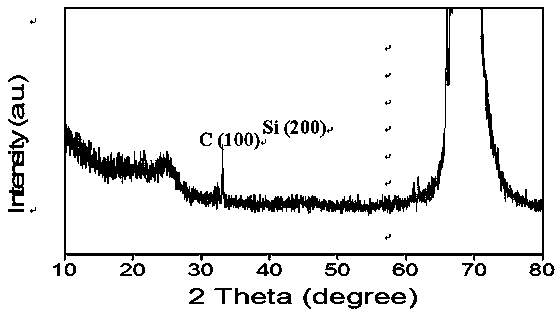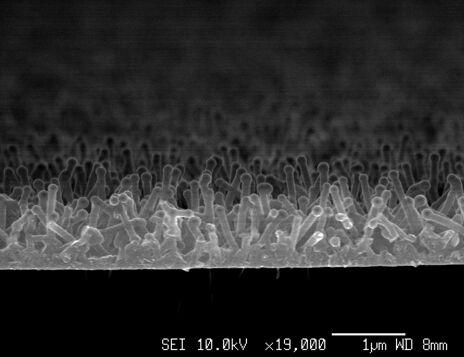Processing method of flexible vibration sensor for monitoring Parkinson syndrome
A technology of vibration sensor and processing method, applied in the direction of sensor, application, diagnostic recording/measurement, etc., can solve the problem of reducing the sensitivity of bending sensor, and achieve the effect of low power consumption, low cost and high stability
- Summary
- Abstract
- Description
- Claims
- Application Information
AI Technical Summary
Problems solved by technology
Method used
Image
Examples
Embodiment 1
[0039]Embodiment 1: A method for processing a flexible vibration sensor for monitoring Parkinson's syndrome, comprising the following steps: spin-coating photoresist: dropping positive photoresist AZ5214 on a high-temperature-resistant substrate, which is a silicon substrate , Spin-coat on a high-temperature-resistant substrate at a rotation rate of 3000rpm for 30 seconds, spin-coat to form a photoresist film with a thickness of 1um, and then bake it on a hot plate at a temperature of 90°C for 2 minutes to cure the photoresist to obtain coating Plate; Exposure: Carry out lithographic exposure to the glue-coated plate, place a mask plate engraved with a base pattern on the lithography machine, the pattern on the mask plate is transparent, and the non-pattern is opaque; the photoresist plate is placed on the Photolithographic exposure under the mask plate to obtain a patterned modified rubber-coated plate; development: use a photoresist developer to develop the patterned modified...
Embodiment 2
[0040] Embodiment 2: A method for processing a flexible vibration sensor for monitoring Parkinson's syndrome, comprising the following steps: spin-coating photoresist: dropping positive photoresist on a high-temperature-resistant substrate, and the high-temperature-resistant substrate is Si / SiO2 The substrate is spin-coated to form a photoresist film with a thickness of 5um, and then baked on a hot plate at a temperature of 100°C for 5 minutes to cure the photoresist to obtain a coated board; exposure: perform photolithography exposure on the coated board, Place the mask plate engraved with the base pattern on the photolithography machine, the pattern on the mask plate is transparent, and the non-pattern part is opaque; the photoresist plate is placed under the mask plate for photolithographic exposure to obtain patterned modification Coated board; development: use photoresist developer to develop the patterned modified rubberized board to obtain a developed board, and the patt...
Embodiment 3
[0041] Embodiment 3: A method for processing a flexible vibration sensor for monitoring Parkinson's syndrome, comprising the following steps: spin-coating photoresist: dropping negative photoresist on a high-temperature-resistant substrate, the high-temperature-resistant substrate is a quartz substrate, Spin coating to form a photoresist film with a thickness of 10um, and then bake it on a hot plate at a temperature of 120°C for 10 minutes to cure the photoresist to obtain a coated board; exposure: perform photolithographic exposure on the coated board. A mask plate engraved with a base pattern is placed on the machine, and the pattern on the mask plate is opaque, while the non-pattern area is light-transmitting; the photoresist plate is placed under the mask plate for photolithographic exposure to obtain a patterned modified rubber-coated plate ;Development: Use a photoresist developer to develop the patterned modified rubber-coated plate to obtain a developing plate; Evaporat...
PUM
| Property | Measurement | Unit |
|---|---|---|
| thickness | aaaaa | aaaaa |
| thickness | aaaaa | aaaaa |
| thickness | aaaaa | aaaaa |
Abstract
Description
Claims
Application Information
 Login to View More
Login to View More - R&D
- Intellectual Property
- Life Sciences
- Materials
- Tech Scout
- Unparalleled Data Quality
- Higher Quality Content
- 60% Fewer Hallucinations
Browse by: Latest US Patents, China's latest patents, Technical Efficacy Thesaurus, Application Domain, Technology Topic, Popular Technical Reports.
© 2025 PatSnap. All rights reserved.Legal|Privacy policy|Modern Slavery Act Transparency Statement|Sitemap|About US| Contact US: help@patsnap.com



